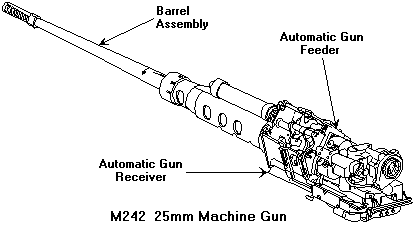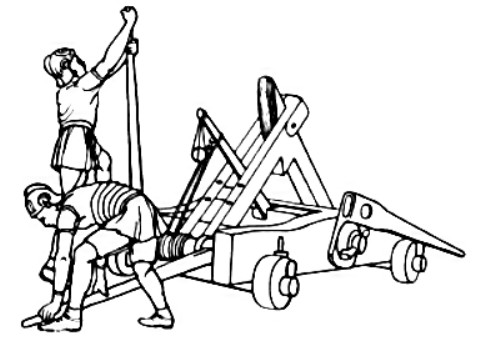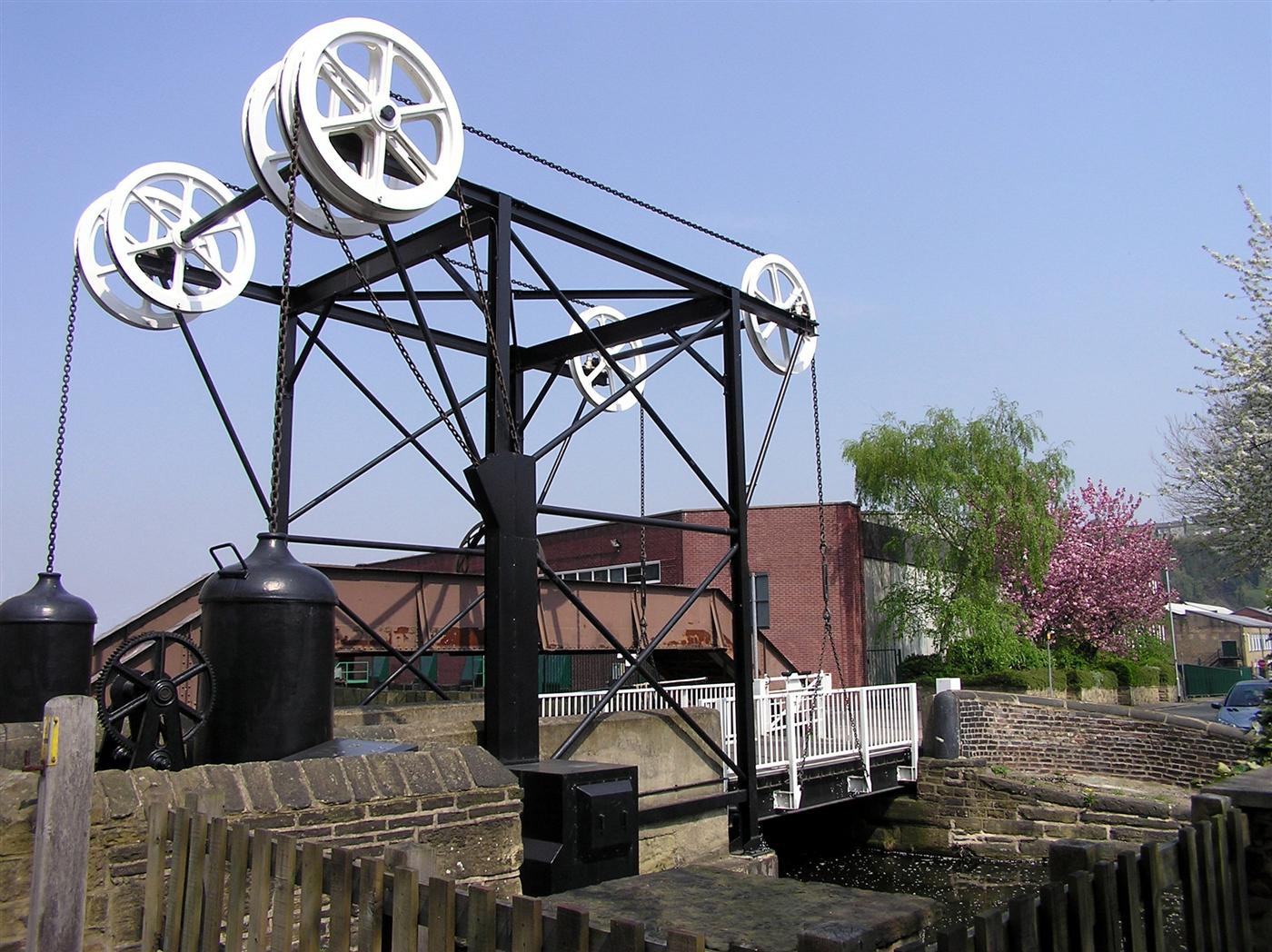|
Polybolos
The polybolos (the name means "multi-thrower" in Greek) was an ancient Greek repeating ballista, reputedly invented by Dionysius of Alexandria (a 3rd-century BC Greek engineer at the Rhodes arsenal,) and used in antiquity. The polybolos was not a crossbow since it used a torsion mechanism, drawing its power from twisted sinew-bundles. Philo of Byzantium ( 280 BC – 220 BC) encountered and described a weapon similar to the polybolos, a catapult that could fire again and again without a need for manual reloading. Philo left a detailed description of the gears that powered its chain drive (the oldest known application of such a mechanism) and that placed bolt after bolt into its firing slot. Design The polybolos would have differed from an ordinary ballista in that it had a wooden hopper magazine, capable of holding several dozen bolts, that was positioned over the mensa (the cradle that holds the bolt prior to firing). The mechanism is unique in that it is driven by ... [...More Info...] [...Related Items...] OR: [Wikipedia] [Google] [Baidu] |
Ballista
The ballista (Latin, from Greek βαλλίστρα ''ballistra'' and that from βάλλω ''ballō'', "throw"), plural ballistae, sometimes called bolt thrower, was an ancient missile weapon that launched either bolts or stones at a distant target. Developed from earlier Greek weapons, it relied upon different mechanics, using two levers with torsion springs instead of a tension prod (the bow part of a modern crossbow). The springs consisted of several loops of twisted skeins. Early versions projected heavy darts or spherical stone projectiles of various sizes for siege warfare. It developed into a smaller precision weapon, the '' scorpio'', and possibly the ''polybolos''. Greek weapon The early ballistae in Ancient Greece were developed from two weapons called oxybeles and gastraphetes. The gastraphetes ('belly-bow') was a handheld crossbow. It had a composite prod and was spanned by bracing the front end of the weapon against the ground while placing the end of a slider ... [...More Info...] [...Related Items...] OR: [Wikipedia] [Google] [Baidu] |
Chain Drive
Chain drive is a way of transmitting mechanical power from one place to another. It is often used to convey power to the wheels of a vehicle, particularly bicycles and motorcycles. It is also used in a wide variety of machines besides vehicles. Most often, the power is conveyed by a roller chain, known as the drive chain or transmission chain, passing over a sprocket gear, with the teeth of the gear meshing with the holes in the links of the chain. The gear is turned, and this pulls the chain putting mechanical force into the system. Another type of drive chain is the Morse chain, invented by the Morse Chain Company of Ithaca, New York, United States. This has inverted teeth. Sometimes the power is output by simply rotating the chain, which can be used to lift or drag objects. In other situations, a second gear is placed and the power is recovered by attaching shafts or hubs to this gear. Though drive chains are often simple oval loops, they can also go around corners by placi ... [...More Info...] [...Related Items...] OR: [Wikipedia] [Google] [Baidu] |
Chain Gun
A chain gun is a type of autocannon or machine gun that uses an external source of power to cycle the weapon's action, rather than diverting excess energy from the cartridges' propellant as in a typical automatic firearm, and does so via a continuous loop of chain drive similar to that used on a motorcycle or bicycle. History In 1972, Hughes Helicopters began a company-funded research effort to design a single machine gun to fire the U.S. Army's M50 round. By April 1973, the program had fired test rounds in more powerful WECOM linked ammunition, from a prototype (A model). In January 1975 a model "C" was added, a linkless version for the proposed Advanced Attack Helicopter YAH-64; the helicopter was later adopted as the Hughes Model 77/AH-64A Apache, with the model C (receiving the designation M230 chain gun) as standard armament. In 1976, Hughes Helicopters successfully patented the chain gun, and it has since been further developed into several other system of different c ... [...More Info...] [...Related Items...] OR: [Wikipedia] [Google] [Baidu] |
Rapid Fire Crossbow
Leonardo's crossbow designs are a series of shooting weapon schematics designed by Leonardo da Vinci that are in the ''Codex Atlanticus.'' One version, a self-spanning infantry weapon called the ''Rapid Fire Crossbow'' (''Balestra Veloce'' in Italian), is found on sheets 143r, 153r and 155r. The other is the ''Giant Crossbow'' (''Balestra Gigante'' in Italian) design intended to be a mounted siege weapon found on sheet 149a in the Codex. The creation of the large design is linked to Ludovico Sforza, an Italian prince in the Renaissance era. Given the constant warfare in the Italian Peninsula at this time, he wanted to expand and advance both his military and the territory he governed in the Milan region. To do so, he wanted to update the current treatise on military engineering by Roberto Valturio. Leonardo responded by writing Sforza a letter that included a number of innovative machine designs with one of them being the ''Giant Crossbow.'' Leonardo also highlighted in the let ... [...More Info...] [...Related Items...] OR: [Wikipedia] [Google] [Baidu] |
Repeating Crossbow
The repeating crossbow (), also known as the repeater crossbow, and the Zhuge crossbow (, also romanized Chu-ko-nu) due to its association with the Three Kingdoms-era strategist Zhuge Liang (181–234 AD), is a crossbow invented during the Warring States period in China that combined the bow spanning, bolt placing, and shooting actions into one motion. The earliest archaeological evidence of the repeating crossbow is found in the state of Chu, but it uses a pistol grip that is different from the later and more commonly known Ming dynasty design. Although the repeating crossbow was in use throughout most of Chinese history until the late Qing dynasty, it was generally regarded as a non-military weapon suited for women, defending households against robbers, and even hunting. History A non- recurve repeating crossbow. Ones used for war would be recurved Naval battle scroll depicting Korean soldiers utilizing repeating recurve crossbows during the Imjin War According ... [...More Info...] [...Related Items...] OR: [Wikipedia] [Google] [Baidu] |
MythBusters (2010 Season)
The cast of the television series ''MythBusters'' perform experiments to verify or debunk urban legends, old wives' tales, and the like. This is a list of the various myths tested on the show as well as the results of the experiments (the myth is Busted, Plausible, or Confirmed). Episode overview Episode 137 – "Boomerang Bullet" * Original air date: January 4, 2010 Adam and Jamie probe a potentially fatal three-way ricochet, while the Build Team tries to re-create medieval germ warfare by turning trees into catapults. 360° Ricochet Conifer Catapult Episode 138 – "Soda Cup Killer" * Original air date: March 24, 2010 This episode was Jessi Combs's final appearance as a member of the Build Team. Cup vs Car Fall Guys Episode 139 – "Dive to Survive" * Original air date: March 31, 2010 Kari Byron returns to the series as of this episode. Dive to Survive Phonebook Freedom Episode 140 – "Spy Car Escape" * Original air date: April 7, 2010 Spy Car Escape Based on ... [...More Info...] [...Related Items...] OR: [Wikipedia] [Google] [Baidu] |
Torsion Siege Engine
A torsion siege engine is a type of siege engine that utilizes torsion to launch projectiles. They were initially developed by the ancient Macedonians, specifically Philip II of Macedon and Alexander the Great, and used through the Middle Ages until the development of gunpowder artillery in the 14th century rendered them obsolete. History Greek Preceding the development of torsion siege engines were tension siege engines that had existed since at least the beginning of the 4th century BC, most notably the gastraphetes in Heron of Alexandria's ''Belopoeica'' that was probably invented in Syracuse by Dionysius the Elder. Though simple torsion devices could have been developed earlier, the first extant evidence of a torsion siege engine comes from the Chalcotheca, the arsenal on the Acropolis An acropolis was the settlement of an upper part of an ancient Greek city, especially a citadel, and frequently a hill with precipitous sides, mainly chosen for purposes of defen ... [...More Info...] [...Related Items...] OR: [Wikipedia] [Google] [Baidu] |
Catapult
A catapult is a ballistic device used to launch a projectile a great distance without the aid of gunpowder or other propellants – particularly various types of ancient and medieval siege engines. A catapult uses the sudden release of stored potential energy to propel its payload. Most convert tension or torsion energy that was more slowly and manually built up within the device before release, via springs, bows, twisted rope, elastic, or any of numerous other materials and mechanisms. In use since ancient times, the catapult has proven to be one of the most persistently effective mechanisms in warfare. In modern times the term can apply to devices ranging from a simple hand-held implement (also called a "slingshot") to a mechanism for launching aircraft from a ship. The earliest catapults date to at least the 7th century BC, with King Uzziah, of Judah, recorded as equipping the walls of Jerusalem with machines that shot "great stones". Catapults are mentioned in Yajurveda un ... [...More Info...] [...Related Items...] OR: [Wikipedia] [Google] [Baidu] |
Ancient Mechanical Artillery
Ancient history is a time period from the beginning of writing and recorded human history to as far as late antiquity. The span of recorded history is roughly 5,000 years, beginning with the Sumerian cuneiform script. Ancient history covers all continents inhabited by humans in the period 3000 BCAD 500. The three-age system periodizes ancient history into the Stone Age, the Bronze Age, and the Iron Age, with recorded history generally considered to begin with the Bronze Age. The start and end of the three ages varies between world regions. In many regions the Bronze Age is generally considered to begin a few centuries prior to 3000 BC, while the end of the Iron Age varies from the early first millennium BC in some regions to the late first millennium AD in others. During the time period of ancient history, the world population was already exponentially increasing due to the Neolithic Revolution, which was in full progress. While in 10,000 BC, the world population stood at ... [...More Info...] [...Related Items...] OR: [Wikipedia] [Google] [Baidu] |
Gastraphetes
The gastraphetes ( grc, γαστραφέτης, , belly-releaser), also called belly bow or belly shooter, was a hand-held crossbow used by the Ancient Greeks. It was described in the 1st century AD by the Greek author Heron of Alexandria in his work ''Belopoeica'', which draws on an earlier account of the famous Greek engineer Ctesibius ( fl. 285–222 BC). Heron identifies the gastraphetes as the forerunner of the later catapult, which places its invention some unknown time prior to c. 420 BC. Unlike later Roman and medieval crossbows, spanning the weapon was not done by pulling up the string, but by pushing down an elaborate slider mechanism. Description A fairly detailed description and drawing of the gastraphetes appears in Heron's ''Belopoeica'' (Ancient Greek Βελοποιικά, English translation: ''On arrow-making''), drawn from the account by the 3rd-century BC engineer Ctesibius. The weapon was powered by a composite bow. It was cocked by resting the stomach in ... [...More Info...] [...Related Items...] OR: [Wikipedia] [Google] [Baidu] |
Greek Language
Greek ( el, label=Modern Greek, Ελληνικά, Elliniká, ; grc, Ἑλληνική, Hellēnikḗ) is an independent branch of the Indo-European family of languages, native to Greece, Cyprus, southern Italy (Calabria and Salento), southern Albania, and other regions of the Balkans, the Black Sea coast, Asia Minor, and the Eastern Mediterranean. It has the longest documented history of any Indo-European language, spanning at least 3,400 years of written records. Its writing system is the Greek alphabet, which has been used for approximately 2,800 years; previously, Greek was recorded in writing systems such as Linear B and the Cypriot syllabary. The alphabet arose from the Phoenician script and was in turn the basis of the Latin, Cyrillic, Armenian, Coptic, Gothic, and many other writing systems. The Greek language holds a very important place in the history of the Western world. Beginning with the epics of Homer, ancient Greek literature includes many works of lasting impo ... [...More Info...] [...Related Items...] OR: [Wikipedia] [Google] [Baidu] |
Windlass
The windlass is an apparatus for moving heavy weights. Typically, a windlass consists of a horizontal cylinder (barrel), which is rotated by the turn of a crank or belt. A winch is affixed to one or both ends, and a cable or rope is wound around the winch, pulling a weight attached to the opposite end. The Greek scientist Archimedes was the inventor of the windlass. The oldest depiction of a windlass for raising water can be found in the Book of Agriculture published in 1313 by the Chinese official Wang Zhen of the Yuan Dynasty ( 1290–1333). Uses *Vitruvius, a military engineer writing about 28 BC, defined a machine as "a combination of timber fastened together, chiefly efficacious in moving great weights." About a century later, Hero of Alexandria summarized the practice of his day by naming the "five simple machines" for "moving a given weight by a given force" as the lever, windlass, screw for power, wedge, and tackle block (pulley). Until nearly the end of the nine ... [...More Info...] [...Related Items...] OR: [Wikipedia] [Google] [Baidu] |


.jpg)






